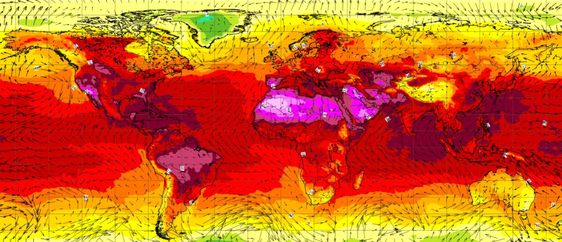Tatiana Grozetskaya/Shutterstock.com
Dave Frame, Victoria University of Wellington and H. Damon Matthews, Concordia University
The Paris climate agreement has two aims: “holding the increase in global average temperature to well below 2℃ above pre-industrial levels and pursuing efforts to limit the temperature increase to 1.5℃”. The more ambitious of these is not yet out of reach, according to our new research.
Despite previous suggestions that this goal may be a lost cause, our calculations suggest that staying below 1.5℃ looks scientifically feasible, if extremely challenging.
Read more: What is a pre-industrial climate and why does it matter?.
Climate targets such as the 1.5℃ and 2℃ goals have been interpreted in various ways. In practice, however, these targets are probably best seen as focal points for negotiations, providing a common basis for action.
To develop policies capable of hitting these targets, we need to know the size of the “carbon budget” – the total amount of greenhouse emissions consistent with a particular temperature target. Armed with this knowledge, governments can set policies designed to reduce emissions by the corresponding amount.
In a study published in Nature Geoscience, we and our international colleagues present a new estimate of how much carbon budget is left if we want to remain below 1.5℃ of global warming relative to pre-industrial temperatures (bearing in mind that we are already at around 0.9℃ for the present decade).
We calculate that by limiting total CO₂ emissions from the beginning of 2015 to around 880 billion tonnes of CO₂ (240 billion tonnes of carbon), we would give ourselves a two-in-three chance of holding warming to less than 0.6℃ above the present decade. This may sound a lot, but to put it in context, if CO₂ emissions were to continue to increase along current trends, even this new budget would be exhausted in less than 20 years 1.5℃ (see Climate Clock). This budget is consistent with the 1.5℃ goal, given the warming that humans have already caused, and is substantially greater than the budgets previously inferred from the 5th Assessment Report of the Intergovernmental Panel on Climate Change (IPCC), released in 2013-14.
This does not mean that the IPCC got it wrong. Having predated the Paris Agreement, the IPCC report included very little analysis of the 1.5℃ target, which only became a political option during the Paris negotiations themselves. The IPCC did not develop a thorough estimate of carbon budgets consistent with 1.5℃, for the simple reason that nobody had asked them to.
The new study contains a far more comprehensive analysis of the factors that help to determine carbon budgets, such as model-data comparisons, the treatment of non-CO₂ gases, and the issue of the maximum rates at which emissions can feasibly be reduced.
Tough task
The emissions reductions required to stay within this budget remain extremely challenging. CO₂ emissions would need to decline by 4-6% per year for several decades. There are precedents for this, but not happy ones: these kinds of declines have historically been seen in events such as the Great Depression, the years following World War II, and during the collapse of the Soviet Union – and even these episodes were relatively brief.
Yet it would be wrong to conclude that greenhouse emissions can only plummet during times of economic collapse and human misery. Really, there is no historical analogy to show how rapidly human societies can rise to this challenge because there is also no analogy for the matrix of problems (and opportunities) posed by climate change.
There are several optimistic signs that peak emissions may be near. From 2000 to 2013 global emissions climbed sharply, largely because of China’s rapid development. But global emissions may now have plateaued, and given the problems that China encountered with pollution, it is unlikely that other nations will attempt to follow the same path. Rapid reduction in the price of solar and wind energy has also led to substantial increases in renewable energy capacity, which also offers hope for future emissions trajectories.
In fact, we do not really know how fast we can decarbonize an economy while improving human lives because so far we haven’t tried very hard to find out. Politically, climate change is an “aggregate efforts global public good”, which basically means everyone needs to pull together to be successful.
This is hard. The problem with climate diplomacy (and the reason it took so long to broker a global agreement) is that the incentives for nations to tackle climate change are collectively strong but individually weak.
Read more: Paris climate targets aren’t enough but we can close the gap.
This is, unfortunately, the nature of the problem. But our research suggests that a 1.5℃ world, dismissed in some quarters as a pipe dream, remains physically possible.
Whether it is politically possible depends on the interplay between technology, economics, and politics. For the world to achieve its most ambitious climate aspiration, countries need to set stronger climate pledges for 2030 and then keep making deep emissions cut for decades.
![]() No one is saying it will be easy. But our calculations suggest that it can be done.
No one is saying it will be easy. But our calculations suggest that it can be done.
Dave Frame, Professor of Climate Change, Victoria University of Wellington and H. Damon Matthews, Professor and Concordia University Research Chair in Climate Science and Sustainability, Concordia University
This article was originally published on The Conversation. Read the original article.




3 Comments
Pingback: kojic acid serum
Pingback: บุญมี สล็อต
Pingback: ayahuasca brew for sale